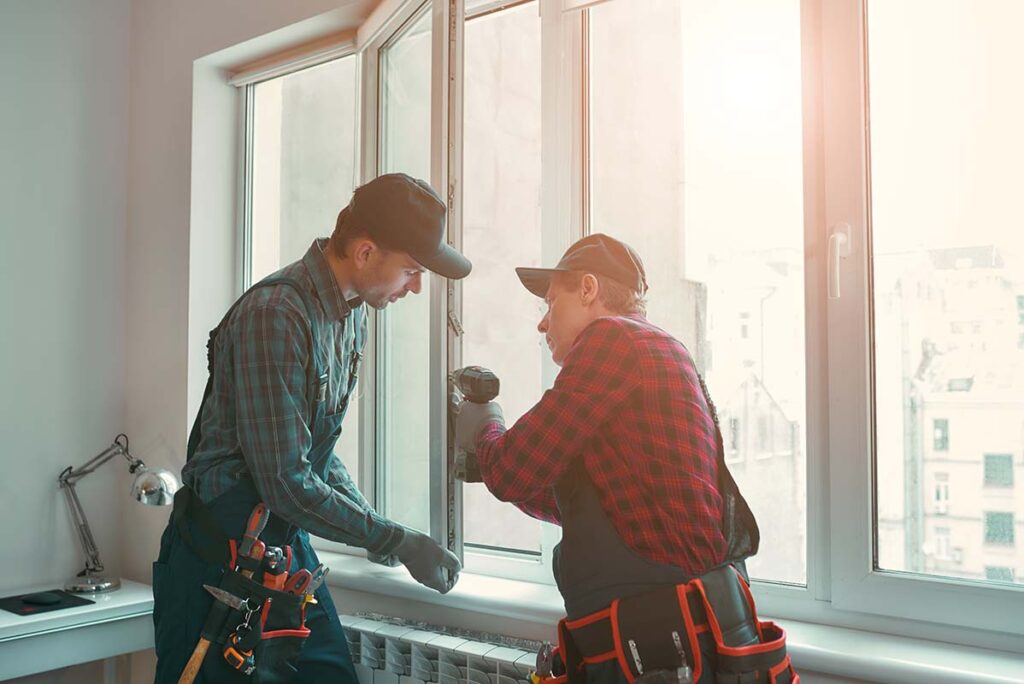The transition from single glazing to double glazing in the UK represents a significant advancement in building technology, contributing to improved energy efficiency, comfort, and noise reduction in homes and buildings. This article delves into the history of this evolution, examining the factors that drove the change, the technological innovations involved, and the impact on the UK’s architectural landscape.
Early History of Glazing in the UK
The use of glass in windows dates back to Roman Britain, where small panes of glass were used in affluent homes and public buildings. However, it wasn’t until the mediaeval period that glazing became more widespread, primarily in churches and wealthy estates. By the 17th century, glass windows became more common in residential buildings, albeit still a luxury.
Single Glazing: The Standard for Centuries
For many centuries, single glazing was the standard in UK homes. Single-glazed windows consist of a single pane of glass set within a frame. While they provided a basic barrier against the elements, they offered limited insulation against heat and noise.
- Thermal Inefficiency: Single glazing allowed significant heat loss, making homes difficult to heat during the colder months. This inefficiency led to higher energy consumption and costs.
- Condensation Issues: Single-glazed windows often suffered from condensation problems, particularly in colder climates. This not only caused discomfort but also led to issues such as mould growth and damage to window frames.
- Noise Pollution: Single glazing provided minimal sound insulation, allowing external noise to penetrate homes easily, which was particularly problematic in urban areas.
The Emergence of Double Glazing
The concept of double glazing began to take shape in the early 20th century, driven by the need for better thermal insulation and energy efficiency.
- Early Innovations: The first double-glazed windows were developed in the United States in the 1930s. These early versions consisted of two panes of glass separated by a small air gap, which acted as an insulating layer.
- Introduction to the UK: Double glazing started gaining attention in the UK in the 1950s and 1960s. The initial adoption was slow, primarily due to the higher cost compared to single glazing and a lack of awareness about its benefits.
Technological Advancements and Wider Adoption
Several technological advancements contributed to the wider adoption of double glazing in the UK:
- Improved Manufacturing Techniques: Advances in manufacturing made double glazing more affordable and accessible. The development of sealed units, which featured two panes of glass hermetically sealed around a spacer, significantly improved the insulating properties and durability of double-glazed windows.
- Enhanced Materials: The introduction of materials such as uPVC (unplasticised polyvinyl chloride) revolutionised window frames. uPVC is durable, low-maintenance, and offers excellent thermal insulation properties, making it an ideal complement to double glazing.
- Government Regulations and Incentives: The UK government played a crucial role in promoting double glazing through regulations and incentives aimed at improving energy efficiency. Building regulations introduced in the 1980s and 1990s mandated higher insulation standards for new buildings, which included the use of double glazing.
The Energy Crisis and Environmental Awareness
The energy crisis of the 1970s and the growing awareness of environmental issues further accelerated the adoption of double glazing in the UK. The realisation that energy efficiency could significantly reduce heating costs and lower carbon emissions led to increased demand for double-glazed windows.
- Energy Efficiency: Double glazing reduces heat loss through windows, which accounts for a significant portion of energy loss in homes. By creating a barrier that minimises thermal transfer, double-glazed windows help maintain a consistent indoor temperature, reducing the need for excessive heating.
- Environmental Impact: With a growing focus on sustainability, double glazing has become an essential component of eco-friendly building practices. By improving energy efficiency, double-glazed windows contribute to lower greenhouse gas emissions and a reduced carbon footprint.
Modern Double Glazing Technologies
The evolution of double glazing did not stop at the basic two-pane design. Modern double glazing technologies offer even greater benefits:
- Low-E Glass: Low-emissivity (Low-E) glass has a special coating that reflects heat back into the room while allowing sunlight to enter. This enhances the thermal insulation properties of double glazing, making it even more effective in reducing energy consumption.
- Argon-Filled Units: Many double-glazed units now use argon gas instead of air in the gap between the panes. Argon has better insulating properties than air, further reducing heat transfer and improving energy efficiency.
- Triple Glazing: While not as common as double glazing, triple glazing is gaining popularity in the UK. It features three panes of glass with two insulating gaps, offering superior thermal insulation and noise reduction compared to double glazing.
The Impact on UK Homes and Buildings
The widespread adoption of double glazing has had a profound impact on homes and buildings across the UK:
- Energy Savings: Homeowners with double-glazed windows benefit from lower energy bills due to reduced heat loss and improved energy efficiency. This has made homes more affordable to heat and cool.
- Increased Comfort: Double glazing provides a more comfortable living environment by maintaining consistent indoor temperatures and reducing drafts. It also minimises noise pollution, creating a quieter and more peaceful home.
- Property Value: The installation of double-glazed windows is often seen as an investment that increases property value. Homes with double glazing are more attractive to buyers due to the associated energy savings and comfort benefits.
The Advancements in Building Tech
The journey from single glazing to double glazing in the UK is a testament to the advancements in building technology and the growing awareness of energy efficiency and environmental sustainability. From the early adoption of double-glazed units to the modern innovations in glazing technology, this evolution has transformed the UK’s architectural landscape, providing homeowners with more efficient, comfortable, and environmentally friendly living spaces. As the demand for sustainable building practices continues to rise, double glazing remains a cornerstone of energy-efficient home design, contributing to a greener and more sustainable future.







